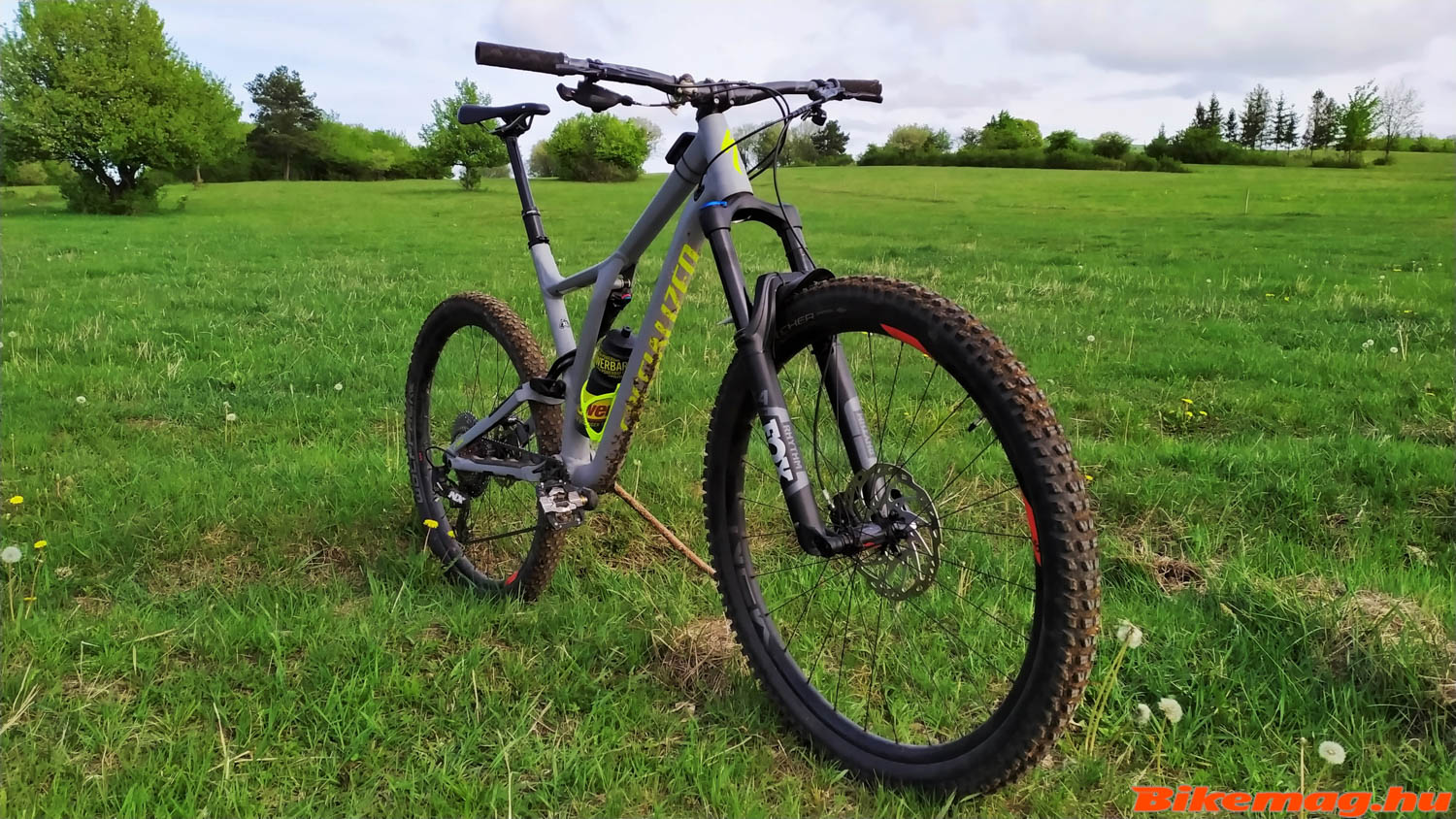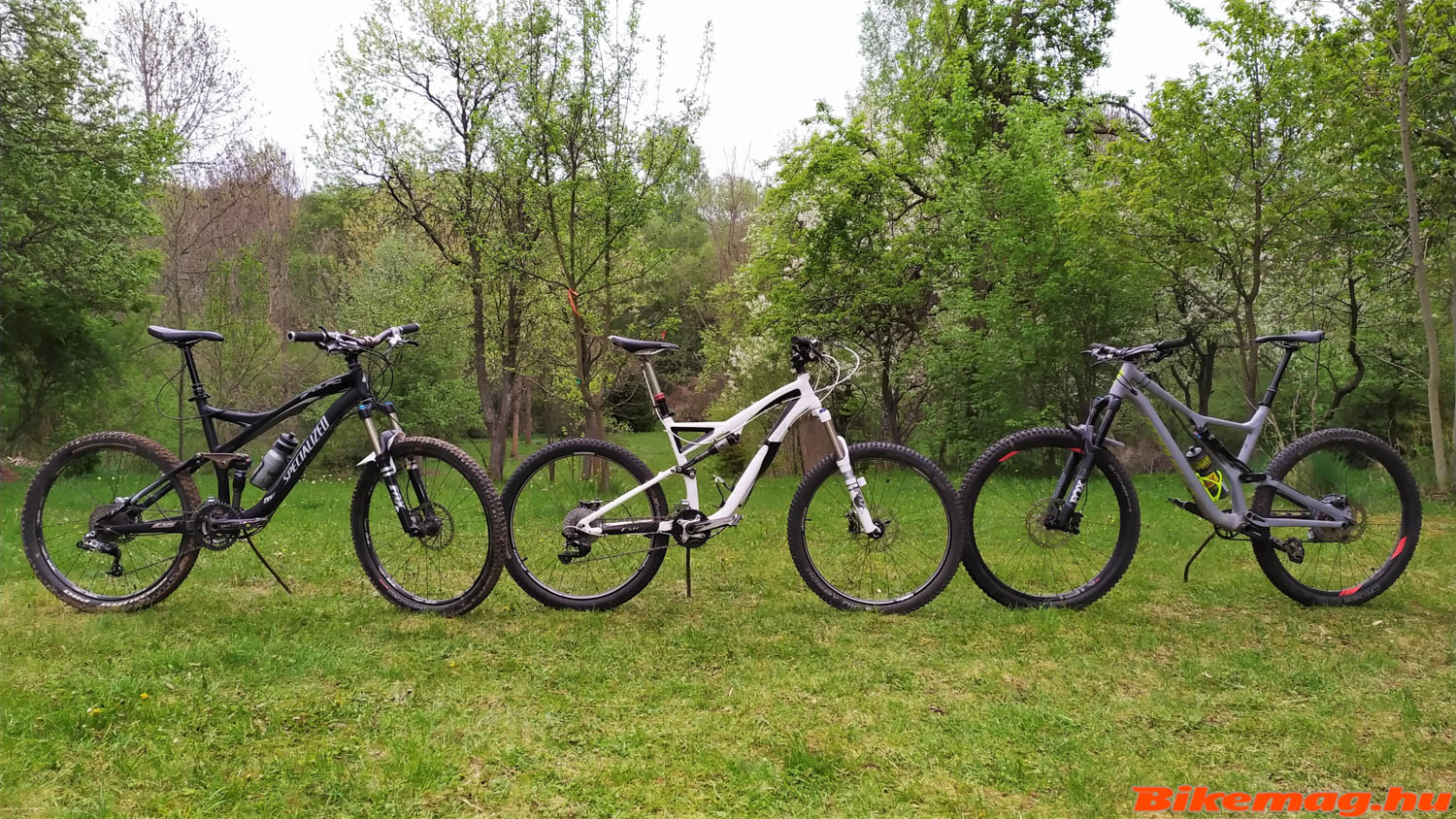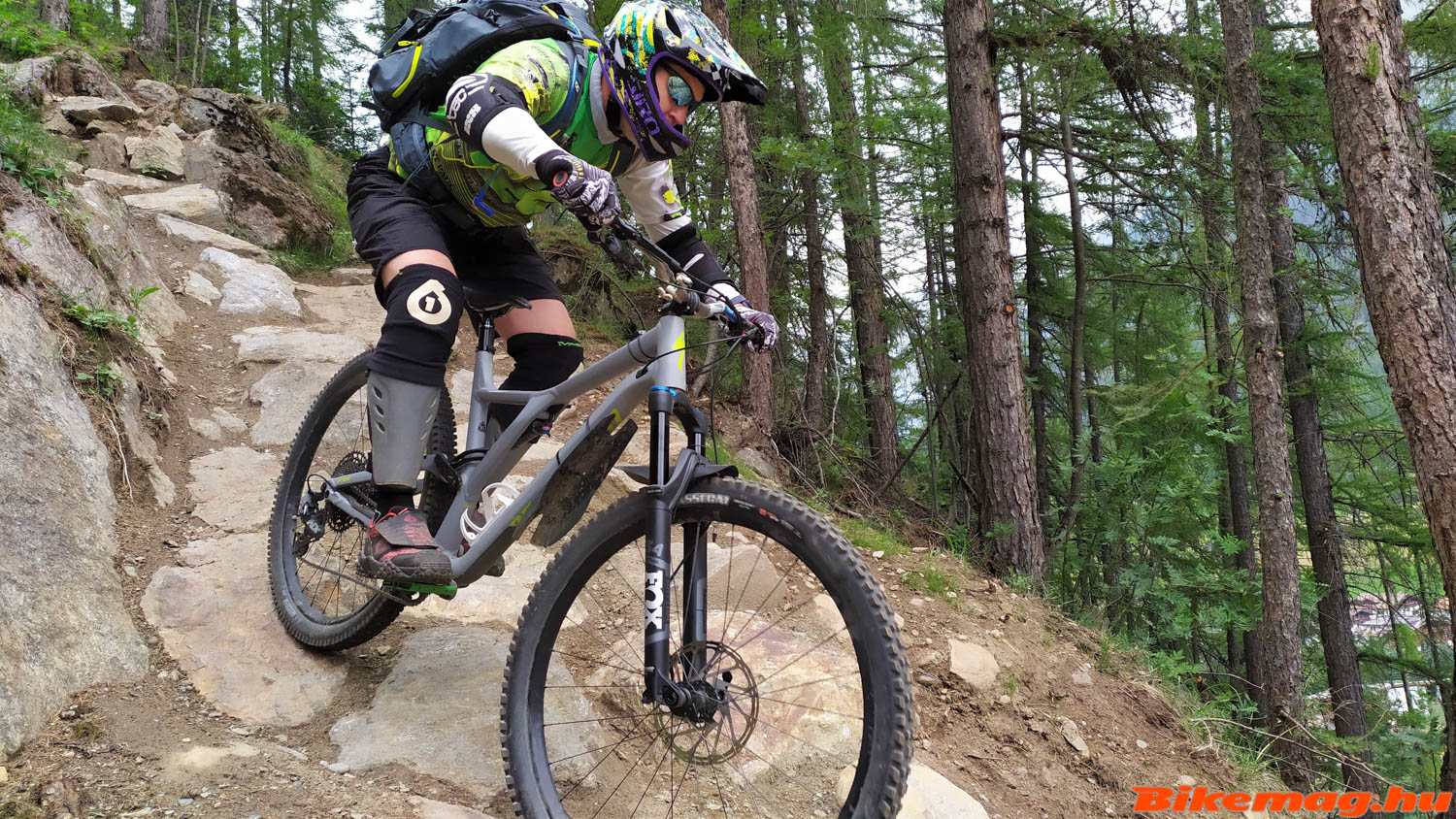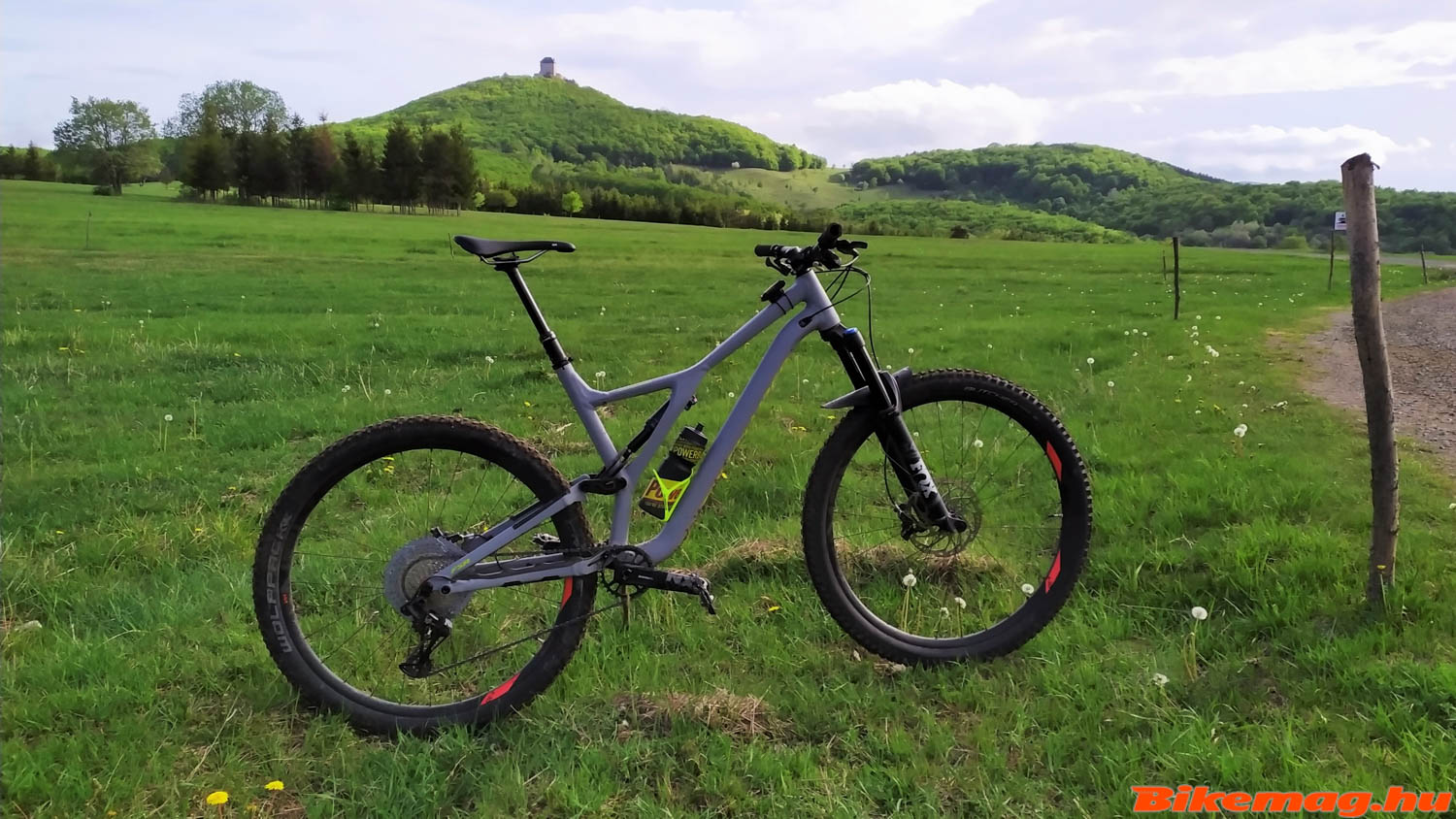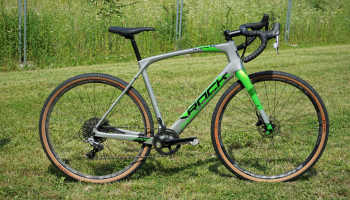In the past 6 months I have collected plenty of distance and experience aboard my Specialized Stumpjumper FSR Comp 29. In the first installment of my review I looked at the bike from a technological perspective, now it’s time to tell you what living with the Stumpy is like, how it performs, and what changes I have made to the original setup along the way. A good part of a year is enough for a bike to develop and crystalize, realizing its optimal form for the rider.
When I purchased this bike I was already the proud owner of a 2017 Specialized Enduro Comp Alu. As I got home with the new Stumpy, I immediately put the two bikes side by side to see how they compare. With a measuring caliper in hand I came to realized that the two bikes are close relatives, they share almost exactly the same tube profiles and dimensions. It’s fair to say that the 2018 Stumpjumper FSR Comp is the previous year’s model on steroids, inheriting quite a lot of technology from the Specialized Enduro model line. Taking into account that my intention was to get a new bike which is a lighter and more nimble than my existing Enduro, the close resemblance was not the best news.
I truly enjoyed the Enduro Comp, but it proved to be too much of a bike for the trails I generally ride. It’s an awesome bike for parks and on the slopes of the Alps, but unfortunately I rarely have a chance to visit such fantastic destinations. In my day to day riding a bike with less travel, lighter build and more agility would certainly be an advantage.
Laying the caliper and tape measure aside, I put Stumpy on the scale and saw 15.5kg on the display. It was quite a shock. Sure it’s a size XL, the frame is made of aluminum, so I shouldn’t expect much less, but the figure is still staggering. I immediately started disassembling the bike to see where the bulk was hidden. The first culprit was the Roval wheelset, which – equipped with a pair of 29×2.6” rubber – was a real ballast. The tires themselves were around 950g each, the wheels added another 2.2kg, so that’s over 4kg from the 15 and a half. Then I put the NX cogset on the scales and realized that a considerable portion of the earth crust was used to make this entry level model. 616g must be a record for this component in the history of bike manufacturing! Substituting another wheelset with a lighter cassette which I had on hand cut a considerable amount of from the Stumpy’s porky weight. In the end I managed to get the bike just over 14kg, which is much more pleasing than the original figure. Since I already owned the other wheelset, the upgrade didn’t involve spending more money on the Stumpy project.
The suspension elements – the FOX 34 fork and the FOX Float DPS rear shock – moved smoothly following the usual bead-in period. Nevertheless I felt the fork lacked adequate support on steep downhill trails, and the mid-stroke was more linear. When I increased the amount pressure, the sensitivity of the fork suffered. In such cases there is a clear-cut solution is placing some volume spacer tokens inside the air chamber. These plastic discs effectively reduce the air volume, making the fork more progressive through its travel.
Shifting duty on this “Expert” model is entrusted to the SRAM NX Eagle 1×12 speed system, which I found to provide adequately wide gear range with evenly distributed steps. The speed and the precision under pedaling load is surprisingly good especially at its price and position in the American component maker’s hierarchy. Until the recent launch of the SX Eagle this was the rock bottom group set for 12 speed, but I challenge anyone to find a fault in its operation. The only downside seems to be the hefty rear cassette, though performance-wise it’s also top-notch. The biggest bonus for me was that the Eagle does not throw the chain off when pedaling backwards like the Japanese competitor’s systems.
The frame geometry could be labelled as middle-of-the-road. It doesn’t go as far in the “low and slack” realm as the most recently introduced bikes on the market, but it certainly isn’t old-school either. As I have alluded to in my previous article, the new Stumpy frame adds geometry adjustment to its technical arsenal. As the whole process can be performed in a few minutes without taking out the rear shock or even depressurizing it. So in the first few weeks of ownership I often took the opportunity to make adjustments to frame geometry based on the expected riding conditions. The effect is quite apparent, and I know that a lot of Stumpy owner do actually use feature. With the steeper angles the bike feels more efficient under pedaling, while the slacker angles are perfect for fun riding.
The XL frame size has some drawbacks as I have experienced. The longish 140mm head tube paired with the stock 30mm rise handlebar results in an excessively tall front end. In the steeper geometry setting this wasn’t such a great problem, but in the slacker mode the weight distribution moves lower and towards the back making the high cockpit feel even taller. Fist I tried to compensate for this by moving the saddle forward and tilting it downward, but the rail is simply not long enough to solve the problem. Since I found the slacker setting preferable for my style of riding, I had to find another solution. This involved swapping the riser bar for a flat one with zero rise. This really made the difference I was looking for, so the saddle went back to its original place, and balance was restored both on steep uphills and descends. Since this modification, I have rarely took the trouble to switch the geometry settings of the frame as the lower and slacker is so much more enjoyable.
The wide Specialized Butcher and Purgatory tires do a decent job, they provide adequate traction in a variety of riding conditions. As the wheels come with tubeless tape installed, only the supplied valves have to be inserted and liquid sealant added to convert to a tubeless setup. The tires hold pressure quite well, at least better that previous generation of Specialized rubber.
The SRAM Guide brakes with the stock organic pads are easy to modulate, the power is there too if the lever pulled hard enough. The downside – apart from the lack of “bite” – is rapid pad wear. When it was time, I simply swapped the pads for the sintered variety and now braking feels perfect. It provides enough power for riding in the Alps even under constant braking, and the lever throw doesn’t tend to wonder. This is a nice surprise, since the SRAM Guide brakes are notorious for having bite point shifts during long descents. The dropper post still works perfectly after a lot of hard use, which is also quite a remarkable feat in my experience.
Out on the trails
The first few rides were on the stock equipment, thus I can report on what the Stumpjumper FSR Comp is like out of the box. This strategy also provides a handy comparison for each of the upgrades I made on this bike. The Stumpy is definitely comfortable on fire roads both up and down, but there shouldn’t be any doubt about its ability to cope with these kinds of trails. Steep technical climbing is not my forte, this is where I tend to suffer, and it’s unlikely the bike’s fault. Just to make sure, I asked an active racer friend to take the Stumpy out on a ride. He assured me of what I already knew: the bike is a climbing beast! He managed to improve most his Strava times on tough climbs even though the Stumpjumper FSR is considerably heavier than his own rig. I can add that the Stumpy maintains its line on these slow grinds, keeps its nose down, and makes tight maneuvering quite simple. The Purgatory tire at the back tends to bite into the ground, provides great traction even when the surface is loose. The Butcher in front rolls well despite the tall knobs, the considerable width and weight. I felt it to be fairly fast, and it corners in an exemplary fashion. While not being a mud tire per se, it’s not bad in mucky conditions either. Both tires are perfectly fine in terms of performance, they are among the better rubber I have ever tried, and the only reason for their substitution was the excess weight.
The FSR suspension has a tendency to slightly bob under pedaling load. I’m familiar with this, since I’ve been riding this system for nearly 15 years. This is something I can live with, hence my choice to stay with the FSR platform. Most of the time I leave compression dampening fully open, I sometimes close it partially on fire road climbs to lessen bob. I can’t remember ever using the lockout function. On one hand locking out the travel puts more wear into the shock’s internals, on the other hand the ride feel becomes somewhat choppy when the suspension is completely stiff. In either fully or partially open settings the bike climbs well, maintains good traction and feels much lighter than what the weigh would suggest. Specialized have a great job with the suspension platform, and this Stumpy is the best FSR ever!
After all the effort that has gone into climbing comes the justified reward of the descent. For me this is the high point of every ride, and it seem that I share this take on mountain biking with the developers of the Stumpy. I’ve never gone quicker on my favorite trails, not even with the Enduro which has somewhat longer suspension travel. The advantage is clearly in the agile handling. I can change lines and corner quicker with the new bike. It’s much more playful despite the large wheel size. The rider doesn’t have to put too much effort into maneuvering the Stumpy, just point it in the desired direction, let go of the brakes and enjoy the experience. Of course you have to hold tight and pay attention, otherwise the speed may get the better of your controlling skills.
In tight corners you have to do some maneuvering in order to stay on track. In these situations the 29er wheels are clearly at a disadvantage over the 27.5” size. On the other hand, the long-drawn fast corners typically found in bike parks are tailor-made for the Stumpy. It‘s exceptionally stable and measured, thanks in part to the mighty wheelbase (1232mm), as well as to the larger wheels. Although the rear shock is quite sensitive and quick to react, I feel that the travel is much too linear, causing frequent bottoming out on jumps, rocky sections and Alpine terrain in general. Its capabilities are quickly overwhelmed in such situations. Part of problem stems from the short travel, the other factor is the technical limitations of the single chamber, mid-range Fox unit. The shock could be tuned in order to improve its performance, the other possibility would be to upgrade the stock model for a more elaborate offering. If the shock performance was improved, the owner would enjoy a bike with a more extended capabilities.
Supported by two air volume tokens the Fox 34 offers fork very good performance despite its entry-level status in the American suspension brand’s range. Our last trip to Sölden strengthened my faith in this fork where it performed admirably on a quite challenging 6-8km long downhill run. It soaked up all the hits in the rock garden, literary forcing the front tire to the ground. There was no longer any trouble with the linear travel, it’s plenty rigid in all trail conditions under my weight. For my skills and tempo, it offers everything I can possibly ask for.
When it comes to rigidity, the frame is also way above average. I never felt any twisting or instability in sudden turns or after a missed landing. The engineers didn’t try to skimp on material, it’s no doubt a beefy structure. All screws and bolts are as tight as on the first day, nothing came loose during the any of the challenging rides. The quality of manufacturing is praiseworthy, just as we come to expect from Specialized. Thanks to the dune-like surface of the chain stays and the SRAM Eagle derailleur there is virtually no rattle, the bike completely quiet even on the roughest trails.
Upgrades
I’ve already spoken about the wheel and tire swap. The replacements came in the form of a set of Newmen Evolution SL A30, and the new tires were the WTB Vigilante 2.3” at the back and the new German brand, WolfPack’s Cross at the front. The latter is actually a test sample for me to review, it features a light casing with a general use tread, and seems to be on par with the best tires on the market.
Along with the wheel swap, I couldn’t resist replacing the otherwise excellent SRAM NX rear cassette for a more elaborate Sunrace 12-speed model. Its construction mimics the large manufacturers’ top-end offerings, there are two anodized aluminum cog carriers as opposed to the plain steel single cogs on the NX. Thanks to the hardened machined steel cogs the shift performance is very close to the stock cassette, there is a little more noise when shifting under load, but I can live with this. I’ve been running Sunrace cassettes for the past few years and found them to provide great shifting and durability paired with considerably lower weight as well as excellent value.
The stock wheelset with the cassette didn’t end up in the closet. I mounted another pair of tires on them which I also received for testing – the Maxxis Assegai DH and a WTB TrailBoss with reinforced sidewalls – for use in bike parks. I also changed the rather basic stock grips for a silicon-based premium Specialized model. I’ve been using these for quite some time as they provide great comfort and much better shock absorption, which I appreciate the most on the challenging rides in the bike parks and Alpine terrain.
My main realization while testing the Stumpjumper FSR Comp 29 is that the bike industry has truly made a lot of progress in the past few years, way more than at any time during my two decades in the sport. Shifting, breaking, suspension technology have evolved greatly, and now even the lower-end models offer fantastic performance and solid reliability. Suspension travel and wheel size grew in tandem, making the bikes faster and safer.
I’ve owned many Specialized Stumpjumper FSR bikes, and comparing this bike to one I rode way back is staggering. The Stumpy has always been designed to be an all-rounder mountain bike, but the term has evolved with the technical improvements. Today’s all-rounder is a very versatile bike, suitable for many different types of trails from cross country to ones once considered extreme. This aluminum frame Stumpjumper FSR variant wasn’t designed to be featherweight. On the other hand, durability and tackling challenging trails must have received top priority from the design team. Frame geometry is spot on for this type of riding, thus the American legend has once more succeeded in providing a well-rounded package. It’s a fun bike for all kinds of MTB adventures!
For more information, please visit the manufacturer’s website.

